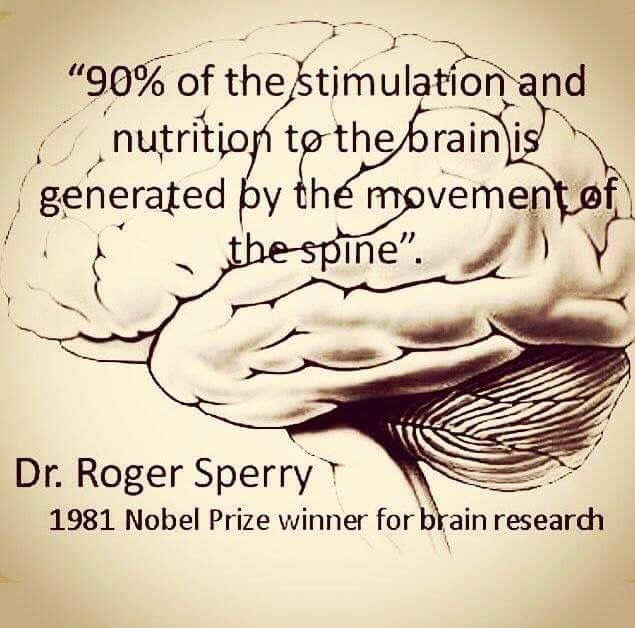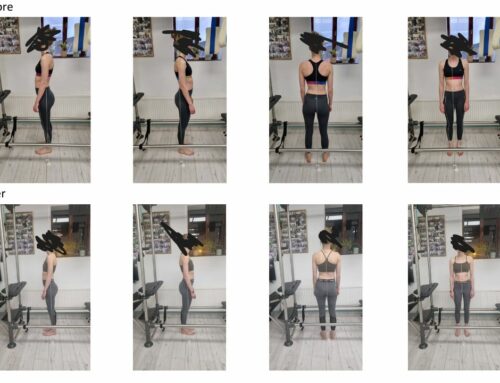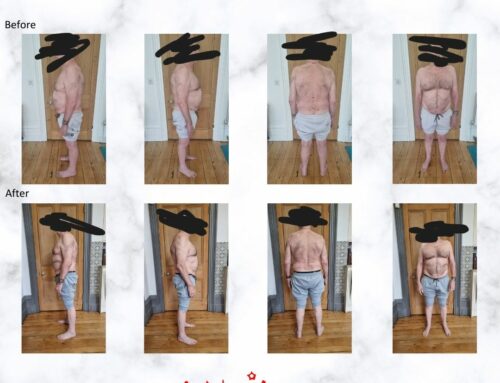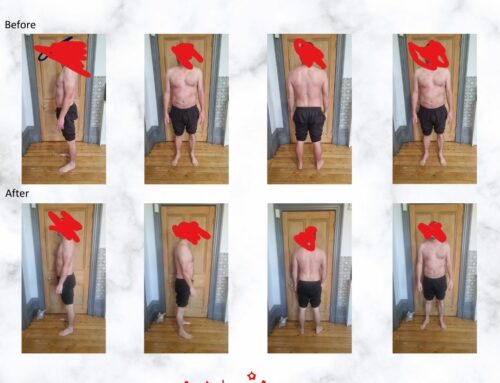Nobel Prize recipient Dr. Roger Sperry says that the spine is the motor that drives the brain. According to his research “90% of the stimulation and nutrition to the brain is generated by the movement of the spine.” Only 10% of our brain’s energy goes into thinking, metabolism, immunity, and healing. Dr.Roger Sperry demonstrated that 90% of brain energy goes into processing and maintaining the body’s relationship with gravity.
Problems in the body occur when the curves of the spine and posture are off neutral. Thus meaning each curve should be 30-35 degrees according to shaffeur. This effects everything from breathing to organ and muscle function, nervous system disposition and many more.
“Ideal Posture is the state of muscular and skeletal balance which protects the supporting structures of the body against injury or progressive deformity, irrespective of the attitude in which these structures are working or resting. It is during a state of ideal posture that the muscles will function most efficiently”. Paul Chek
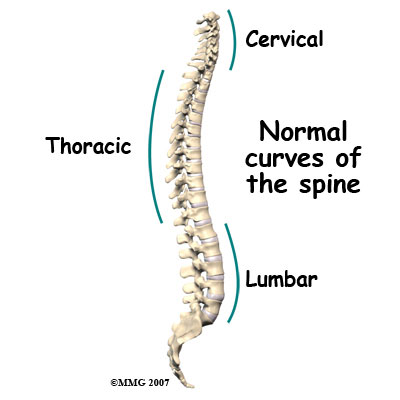
We think of thee spine as three curves cervical, thoracic and lumbar. The average person spends a minimum of 4 hours slumped either at a computer, driving or on the sofa resulting in a ‘forward head posture’.
This ‘forward head posture’ can add up to 30 pounds of abnormal leverage pulling the entire spine out of alignment and may result in the loss of 30% of vital lung capacity,” says University of California’s director of physical medicine and rehabilitation, Rene Cailliet.
As forward head posture decreases lung capacity it affects the body from effectively oxygenating cells. This can lead to asthmatic conditions, blood vessel problems and heart disease. The oxygen deficit affects the entire gastrointestinal system leading to altered nutrient absorption and peristaltic activity. Lowered oxygen states also decrease endorphin production turning the perception of non-painful sensation into pain experiences.
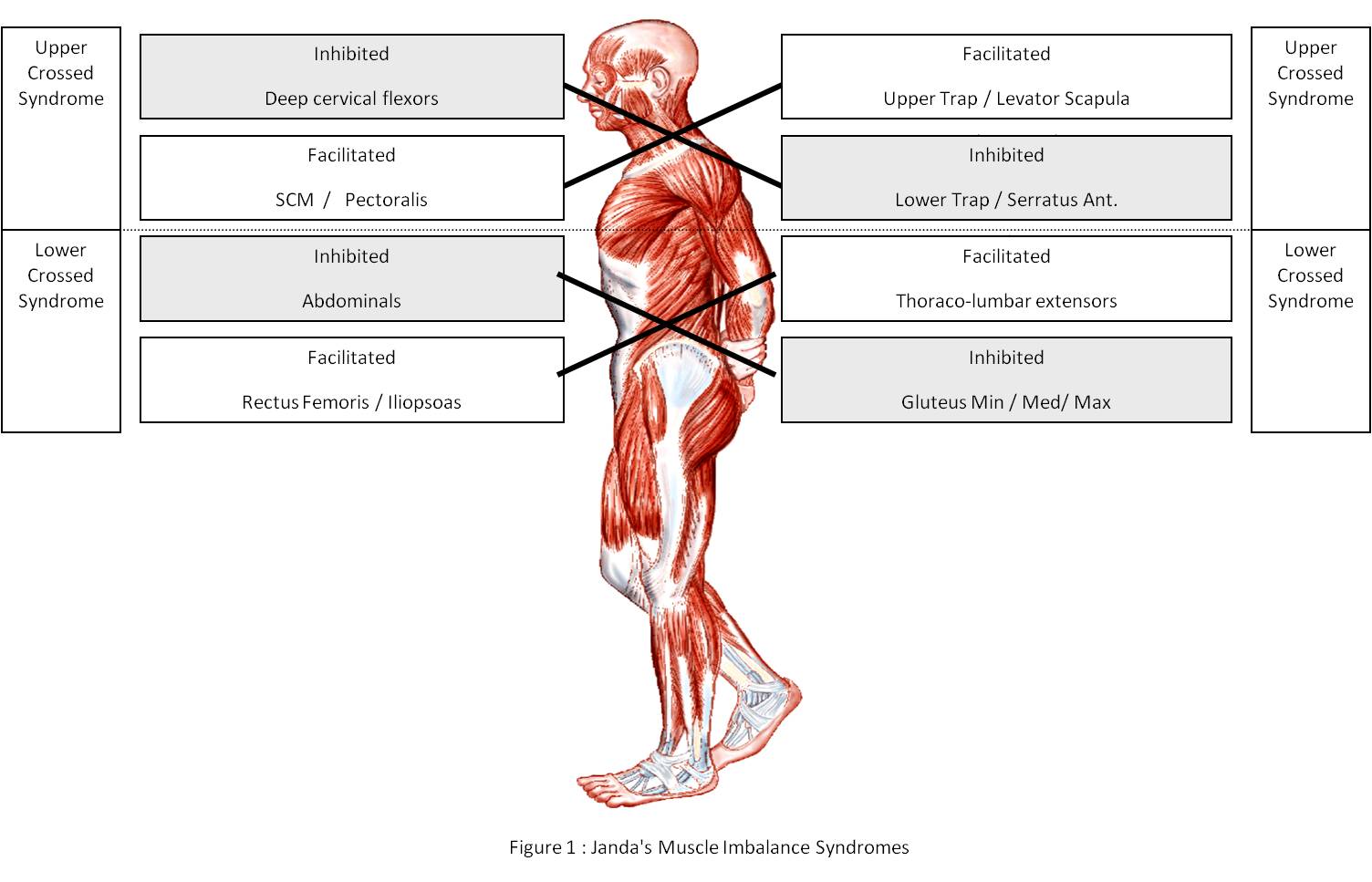
Upper cross syndrome shows the effects of imbalance between the trunk flexors and trunk extensors. As the abdominal musculature become progressively stronger than their antagonists, the following postural aberrations may be seen A) short and tight upper abdominal musculature, B) a depressed sternum, C) a forward head, and D) an increased thoracic kyphosis, often with it’s apex at T7-9.
Lower cross syndrome is shortening of the lumbar erectors, iliopsoas, rectus femoris and tensor fascia latae with lengthening of the lower abdominal musculature, hamstrings, thoracic extensors and superficial cervical flexors. This posture is frequently seen in exercisers who spend a lot of time in the gym exercising with unbalanced programs.
It is very important to stretch tight muscles prior to exercising but not static stretching , dynamic stretching. This is because static stretching sedates the central nervous system. It has been shown by Janda(The Neurobiologic Mechanisms in Manipulative Therapy) that tonic muscles have a propensity for shortening and tightening, often becoming facilitated. Phasic muscles have a propensity for lengthening and weakening. If a muscle group becomes facilitated, it will try to take over the function of synergistic and antagonistic muscles, resulting in perpetuation of muscle imbalance andoften overuse injury to the facilitated muscles.
Need help or curious? Call for your freephone consultation.
Bibliography
Paul Chek

